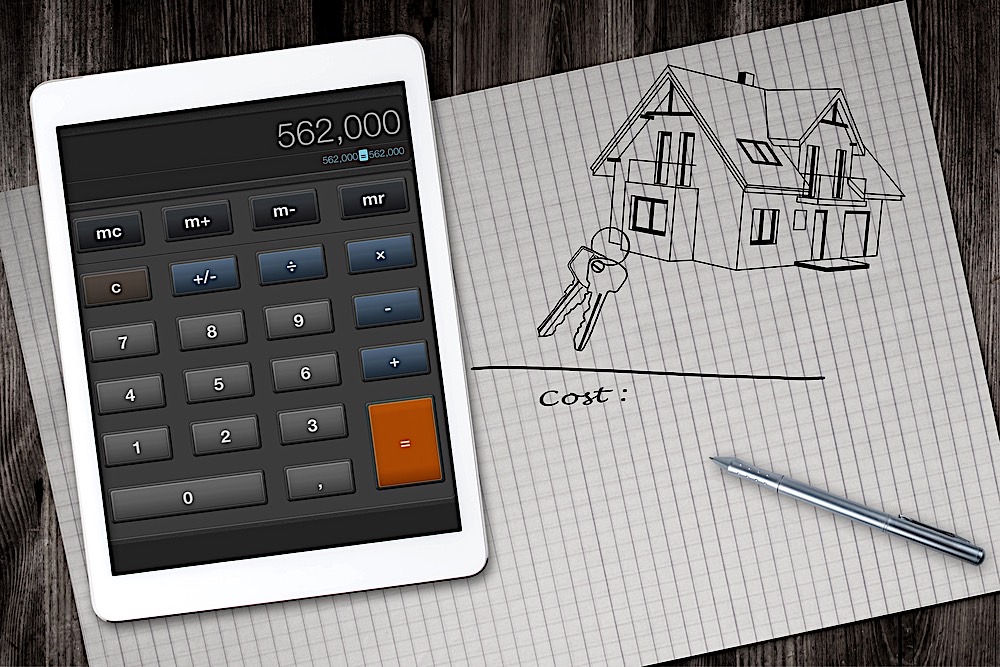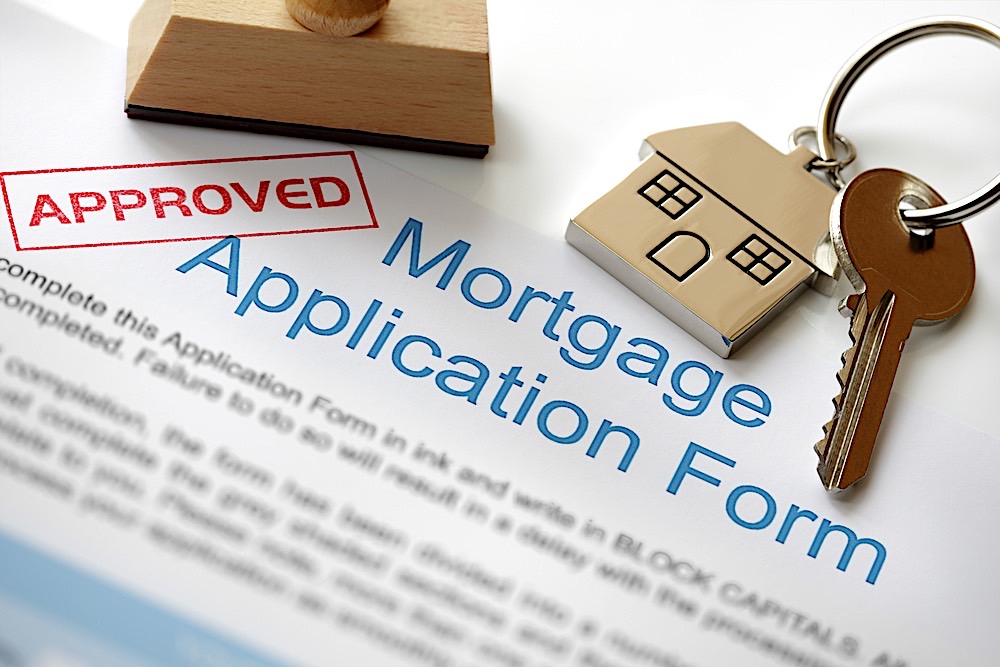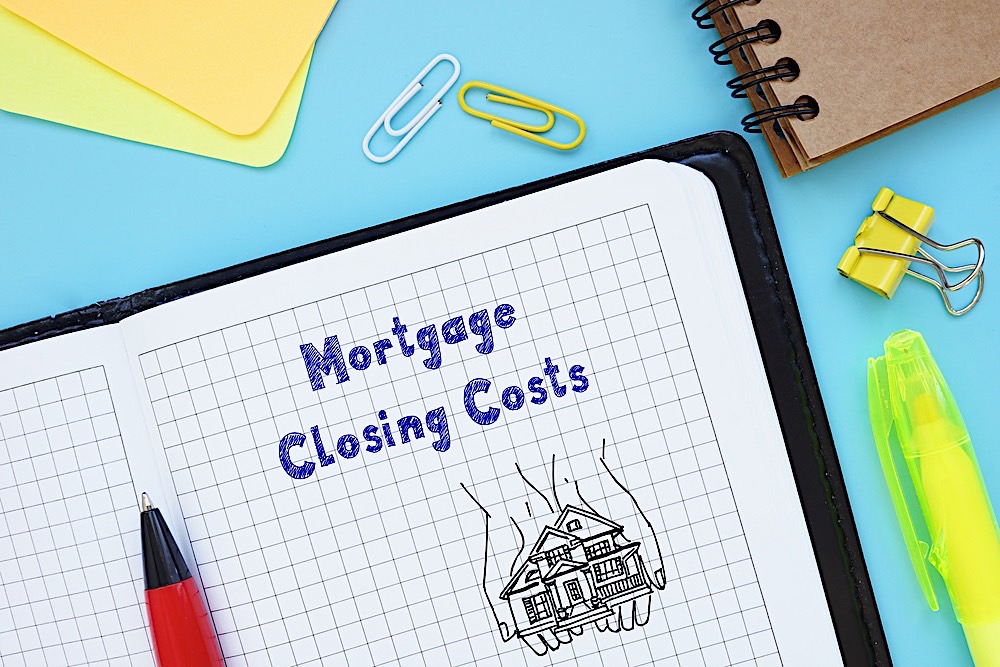First-time homebuyers often make the mistake of believing a house only costs as much as the sale price. In reality, there are many additional costs you’ll face when trying to buy a home. A house is a large and complex asset, so there’s a lot of work that the lender needs to do: appraisals, credit checks, etc. It’s not uncommon for closing costs to be thousands of dollars in additional expenses.
But closing costs are not entirely unpredictable. Two important documents will shed light on your overall mortgage costs: the closing disclosure and the loan estimate.
You can use these documents to ensure that you find the best possible mortgage loan, and so you can plan for its closing costs.

What is a Loan Estimate?
A loan estimate lists all the terms of your mortgage loan, along with some estimates of your closing costs.
The loan estimate is only three pages long. Let’s break down each page.
[Pro Tip: You can view a sample loan estimate here.]
Page One
The first page of the loan estimate gives you a general summary of the loan terms, projected payments, and closing costs.
Here’s the key information listed on page one:
-
Loan Terms and Rate: Your loan amount and your interest rate.
-
Prepayment Penalties: Whether or not you’d be charged a penalty fee for paying off the mortgage before the end of the loan term.
-
Balloon Payments: A balloon payment is when you make lower monthly payments on your mortgage—but at the end of your loan term, you make a final payment that’s significantly higher. [Balloon payments are advantageous only if you’re able to save enough money for the lump sum by its due date.]
-
Projected Monthly Mortgage Payment: The loan estimate will give you a projected monthly mortgage payment, with taxes, insurance, and other assessments factored in.
-
Escrow Expenses: The loan estimate will tell you which expenses are included in your escrow account, such as property taxes or homeowners insurance.
Last but not least, the loan estimate will tell you how much cash you’ll need to have on hand when it’s time to settle the transaction. These are your estimated closing costs.
[ Thinking about investing in real estate? Register to attend a FREE online real estate class and learn how to get started investing in real estate. ]
Page Two
The second page of the loan estimate gives a more detailed breakdown of the closing costs. The fees listed on page two may include:
-
Origination charges
-
Application fee
-
Recording fees
-
Transfer taxes
-
Insurance premiums
-
Initial escrow payments
Page two also provides you with two important lists: the services can shop for, and the services you cannot.
Which services can you find on the can shop/cannot shop list? Here are the most common items:
-
Appraisal fees
-
Credit report fees
-
Flood determination and monitoring fees
-
Tax monitoring and research fees
-
Pest inspection fees
-
Survey fees
-
Titles
It may be beneficial for you to shop for services, so long as you can find a third party that offers a better price. But sometimes, the lender may insist on choosing the provider.
Page Three
The third page of the loan estimate outlines several important loan terms. These terms may include:
-
Whether the lender may order a home appraisal
-
Whether the lender will grant a loan assumption
-
Whether the loan requires homeowners insurance
-
The stipulations and penalty fee for late payments
-
Whether the loan may be refinanced
-
Whether the lender will service the loan or transfer the loan to a different servicer
Page Three also includes comparison numbers that can help you understand the long-term costs of your mortgage loan. You’ll be given:
-
5 Year Costs: How much you’ll have paid after 5 years, including principal, mortgage insurance, and loan costs.
-
Annual Percentage Rate (APR): Your annual loan cost as a percentage of your loan amount.
-
Total Interest Percentage (TIP): The total amount of interest you’ll pay over the course of your loan, as a percentage of your loan amount.

Why is a Loan Estimate Important?
A loan estimate is important for two reasons. First, it will give you a general estimate of the overall cost of your mortgage loan. Second, you can use the loan estimate to compare and contrast mortgages from several different lenders.
If you’ve never bought a house before, you might be surprised to learn that a house costs more than the sales price alone. A home is a large and complicated purchase, so the lender often requires that many conditions be met before it offers a mortgage loan. Mortgage closing costs can increase your costs by thousands of dollars.
You should always read the loan estimate carefully so you’ll have a better understanding of how much the mortgage loan will cost you.
You can also use the loan estimate to shop for mortgages. Get a loan estimate from several different lenders and see which one has the lowest costs or most favorable terms.
Lenders are required to provide you with a loan estimate when you submit a mortgage application, and they’ll give you the loan estimate within three days.
[Pro Tip: When you’re shopping for a mortgage, you must submit your loan applications within a short span of time—that’s how you can avoid taking a big hit on your credit score. That’s also why lenders are required to give you a loan estimate within a few days.]
What is a Closing Disclosure?
The closing disclosure is the final document you’re given before your mortgage closes. It gives you a total of all your costs, including your mortgage rate, fees, and closing costs.
The lender will issue a closing disclosure at least three days before you’re slated to sign the mortgage documents. When you receive the closing disclosure, you’ll want to compare it with the loan estimate to see if any costs have changed significantly.
The HUD-1 form was formerly used for real estate transactions, but the closing disclosure form replaced HUD-1 in 2015.
“Estimate” is the key term here. While the loan estimate is a close estimation of your overall mortgage costs, the closing disclosure is more of an accounting form that states with certainty what your actual costs were.
As you may remember from the previous section, certain costs on the loan estimate are not set in stone. You may have the option to shop for certain services, like home appraisals or inspection fees. These are variable costs.
You might also see discrepancies in prepaid interest, insurance premiums, and recording fees, but these costs are out of the lender’s control.
Why is a Closing Disclosure Important?
Once you sign the mortgage documents, you’re locked in—the closing disclosure is your point of no return. That’s why it’s crucial that you carefully review the closing disclosure and make sure there are no mistakes.
Closing Disclosure: 3-Day Rule
Every homebuyer should be given time to discover any errors in the closing disclosure form. That’s why the “3-Day Rule” exists.
After you compare the loan estimate and closing disclosure, you can report any significant discrepancies to your lender or settlement agent within three days to avoid any major problems at closing.
Three major discrepancies can trigger the lender to issue a revised closing disclosure:
-
A change in your loan’s annual percentage rate (APR)
-
A prepayment penalty is added to your loan when it was not included in your loan estimate
-
When your mortgage is changed to an adjustable-rate loan, when it was a fixed-rate loan on your loan estimate
But you should also heed minor errors, even typos and misspellings. Question them and seek clarification, and be sure they’re corrected before it’s time to sign your mortgage documents. It’s better to be safe than sorry.

How To Check Your Closing Disclosure
Like any other mortgage document, the closing disclosure is dense with numbers and information, and it can be overwhelming to review—especially when you’re trying to make comparisons against the loan estimate.
Go through each page of your closure disclosure, one section at a time, and compare the terms and costs with those listed on your loan estimate (you’ll need to have your loan estimate handy). You may also need to reference your financial records to ensure that records of your transactions and prior payments are accurate.
The closing disclosure has five pages. Let’s briefly review each one.
[Pro Tip: You can view a sample closing disclosure form here.]
Page One
The first page is a general summary of your loan terms, projected payments, and closing costs. It features the same kind of information that’s listed on Page One of your loan estimate.
Page Two
The second page outlines all of your closing costs in detail. Compare this page to Page Two on your loan estimate to see if there are significant discrepancies.
Page Three
The third page tells you how much cash you’ll need to close, and gives you a brief outline of each payment that you need to make at closing.
Page Three also gives you a “summary of transactions.” This is a side-by-side comparison of the buyer’s and seller’s closing costs. This section will tell you how much you’ve already paid and what you own—ditto for the seller.
Page Four
Page Four features the “loan disclosures,” which give you information about the conditions of your loan, such as:
-
Loan assumptions
-
Demand features (allows the lender to mandate early repayment of the loan)
-
Late payments
-
Negative amortization (when your loan increases because you don’t pay the full amount of interest due on a payment)
-
Partial payments (a payment that’s less than the full amount)
Page Four also provides you with a summary of your escrow account and tells you which transactions are covered by your account.
Page Five
Page Five provides you with “loan calculations,” which tells you how much you’ll have:
-
Paid in total
-
Paid in mortgage costs
-
Financed
-
Paid in interest
Then it’ll provide you with helpful information about appraisals, foreclosure liability, refinancing options, and tax deductions.
Lastly, Page Five provides contact information for all the parties involved in the transaction. Beneath the contact information, you’ll find a receipt signature. This signature does not mean that you’ve accepted the loan—only that you’ve acknowledged receiving the closing disclosure.
If everything checks out and there are no significant discrepancies between your closing disclosure and loan estimate—congrats! You’re ready to move onto the final stage of the transaction, the signing of the mortgage documents.
Can Closing Costs Change After a Closing Disclosure?
The closing disclosure contains financial information that’s more accurate than the loan estimate, but the costs still aren’t set in stone.
Some costs can increase even after you’ve received the closing disclosure. These are costs that are typically out of the lender’s control, like homeowners insurance. However, there are some fees—like lender fees—that cannot change after the closing disclosure is issued.
As a buyer, you can inadvertently cause the lender to issue a new closing disclosure due to “change in circumstances.” A change in circumstances may occur when:
-
Your credit score falls
-
You’re going to change your down payment amount
-
Your income changes significantly (i.e., in the event of a job loss)

When you’re preparing to buy a house, it’s good to be on firm financial ground so you can earn better terms and rates on your mortgage loan. Make sure that you have steady income, have paid off most of your debts, and have a good credit score.
Having sturdy finances will help you avoid some of the hiccups that occur during the closing period.
Summary
The loan estimate and the closing disclosure can help you prepare for the hefty closing costs that you’ll face when buying a house. The loan estimate gives you an estimate of your closing costs and your loan terms. You can use the loan estimate to shop for the best possible mortgage loan. The closing disclosure is the final document you’ll review before signing the mortgage papers, and it gives you updated information about the closing costs. Carefully review the closing disclosure and compare the terms and costs with those listed on the loan estimate. If there are major—or even minor—discrepancies, be sure to contact your lender for clarification or correction. However, some changes in costs are unavoidable.
Ready to start taking advantage of the current opportunities in the real estate market?
Click the banner below to take a 90-minute online training class and get started learning how to invest in today’s real estate market!


